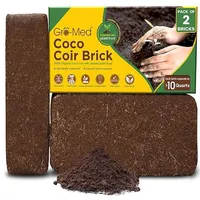How to sow seeds the right way — 7 top tips from a gardening expert
Top seed sowing tips

There’s something quite remarkable about growing your own plants from seeds. You gain a true sense of achievement when you see the first signs of growth emerging from the soil. And it’s not as difficult as you might think.
The secret to growing seeds for optimum success is down to a few key basics. If you get it right, you’ll be rewarded with seeds that germinate and turn into healthy seedlings.
To help you gain the most from your seed growing, I spoke to Brian Talman, Seed Trials Manager at Mr Fothergill's, who shared his expert tips and a few secrets on how to grow seeds the best way. What's more, after watching Talman demonstrate perfectly how to sow seeds, I've taken his tips on board myself when it comes to sowing basil seeds at home.
Compost
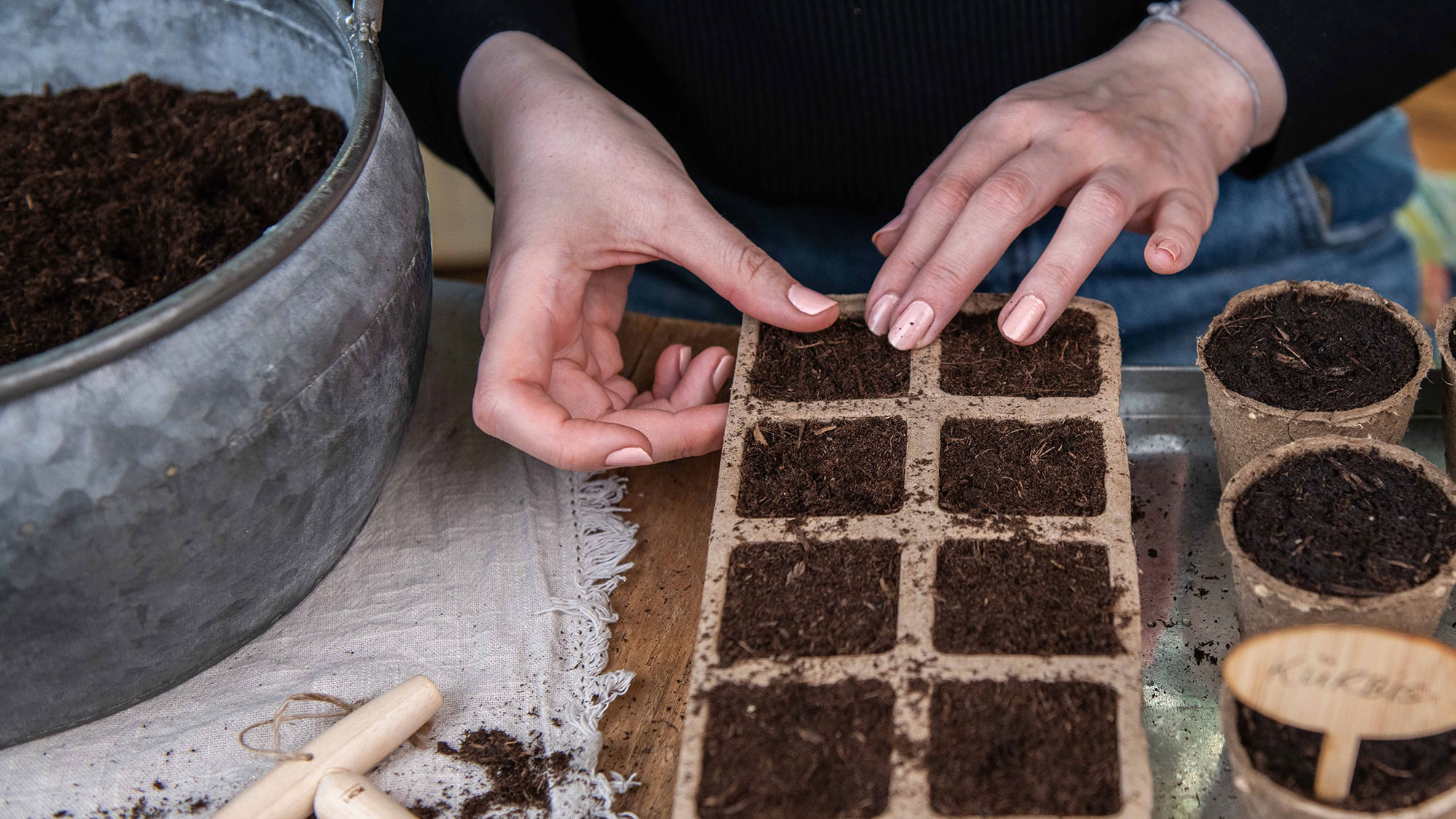
One secret to growing seeds is compost. Talman says, “Choose a compost designed for seed sowing,” adding, “Although, be prepared to pay a bit more for a good compost.”
He uses coir compost, sometimes known as coco coir, which is made from fiber from coconut husks. Mr Fothergill's has developed its own enriched version, which also contains seaweed and slow-release nutrients.
Coir compost is often sold compressed and dry, which makes it compact and lightweight. However, before using it, you’ll need to rehydrate it in water for a few minutes to prepare it for use. Make sure to read the instructions on your specific product for the amount of water you need to add.
Talman says that once you add water to the dry compost, you get a lovely “light and fluffy mix”, with the coir designed to retain moisture and encourage a healthy root system.
Get instant access to breaking news, the hottest reviews, great deals and helpful tips.
However, Talman advises against using just any peat-free compost. “Many of the peat-free composts are stacked with nitrogen that locks up seeds.”
Coco Coir Brick Enriched Potting Compost (2 pk): $14 @ Amazon
This seed compost is 100% organic. It's a lightweight and enriched with plant food and consists of a balanced pH. Just add water and the compost will expand. It is also super water retentive and keeps your seeds moist during germination.
Air
The second important element is to ensure that the compost is aerated. “When filling a pot, you mustn’t make it so compact that there’s no air in the compost,” says Talman.
Therefore, a light and fluffy compost is essential for seed growth and for roots to develop because without oxygen, seeds will remain dormant and won’t germinate.
Water
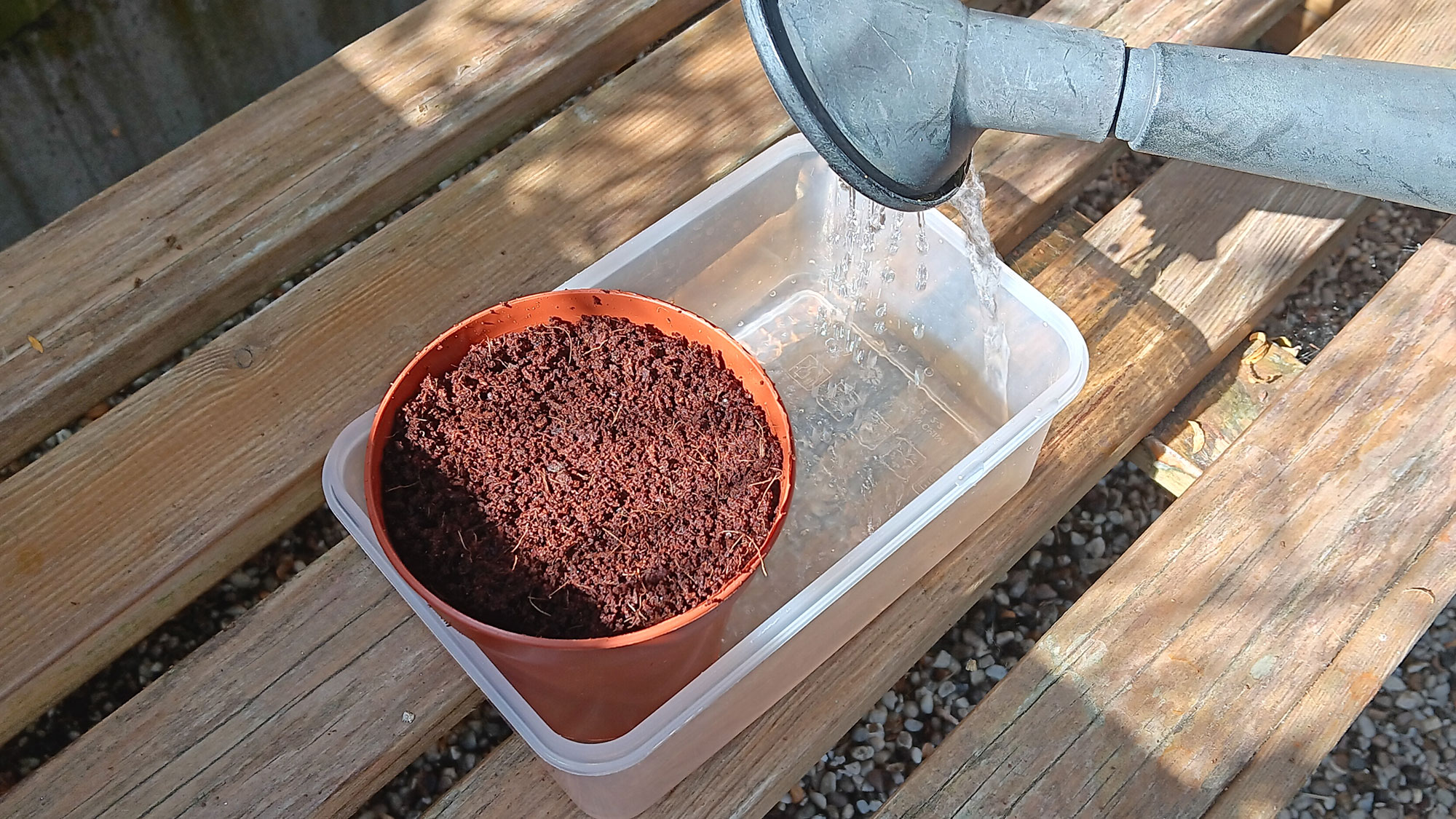
Seeds need water to germinate, along with quality compost and air. However, they don’t like to be flooded, and the water is best drawn in from the bottom of the pot rather than from the top.
“If you do have to water from the top it’s got to go straight into the soil, that’s how a good compost should be. It should receive the water, hold on to enough of it and not act as a pond,” explains Talman.
However, watering from the bottom will ensure the seeds won’t drown before they have the chance to germinate, or that the compost is so compacted that the air is removed.
What’s more, to help regulate moisture, Talman adds a soil additive to his pots. “To keep some air and moisture around the seed, we add vermiculite to the top of the pot. We prefer vermiculite to perlite because if you’ve got seeds that are in a pot for a couple of weeks, the perlite tends to go green, and it can encourage flies.”
What is vermiculite?
Vermiculite is a soil additive that helps improve soil texture, improve water absorption and drainage, and regulate moisture in the compost.
How to sow seeds the best way
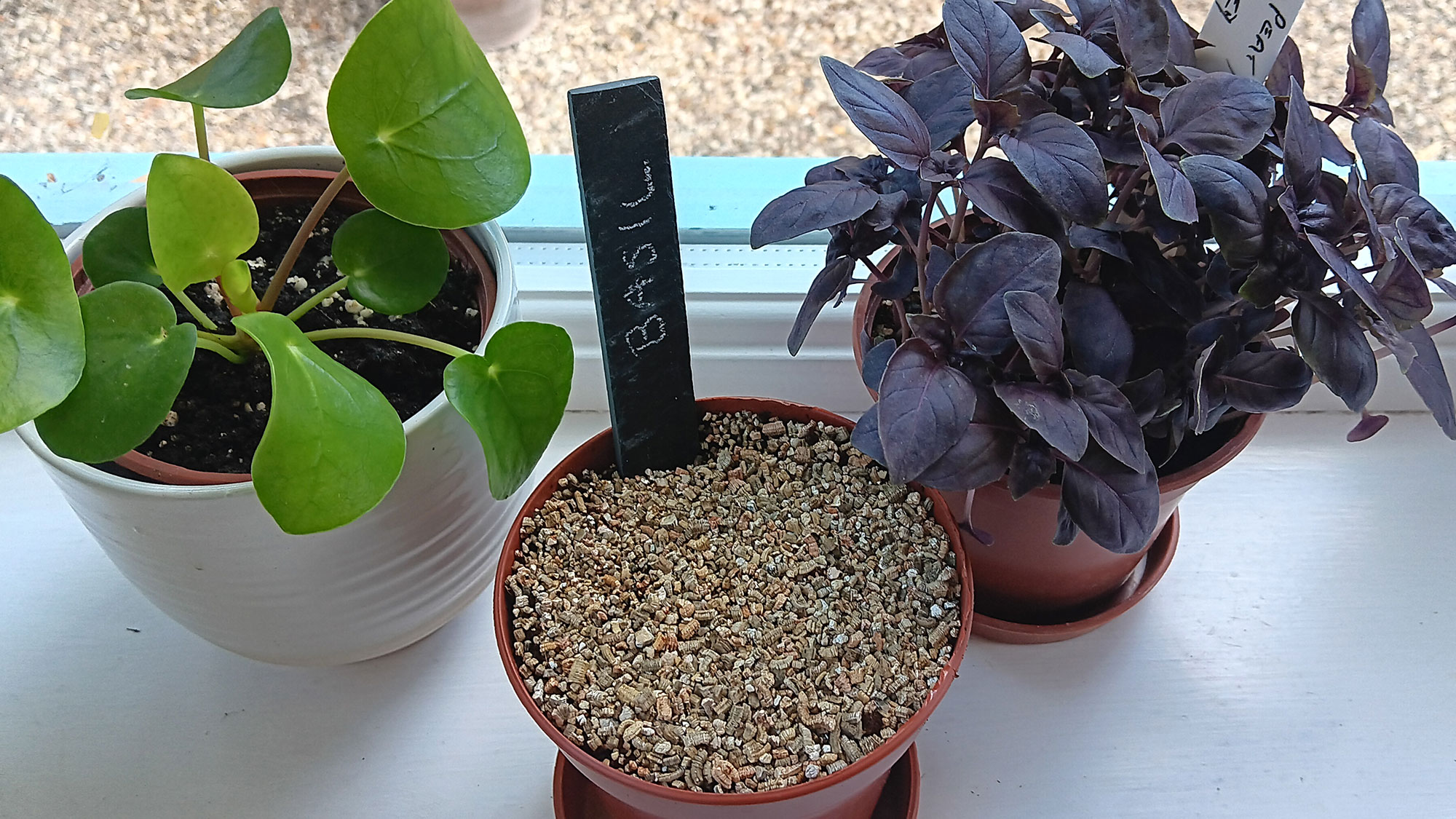
If you're not keen on getting your hands dirty, grab a pair of the best gardening gloves before you handle the compost.
If you're using a dry coir compost, add the required amount of water to it before you prepare to plant your seeds. However, it won't take long. I only had to wait for 5 minutes before I was able to get sowing!
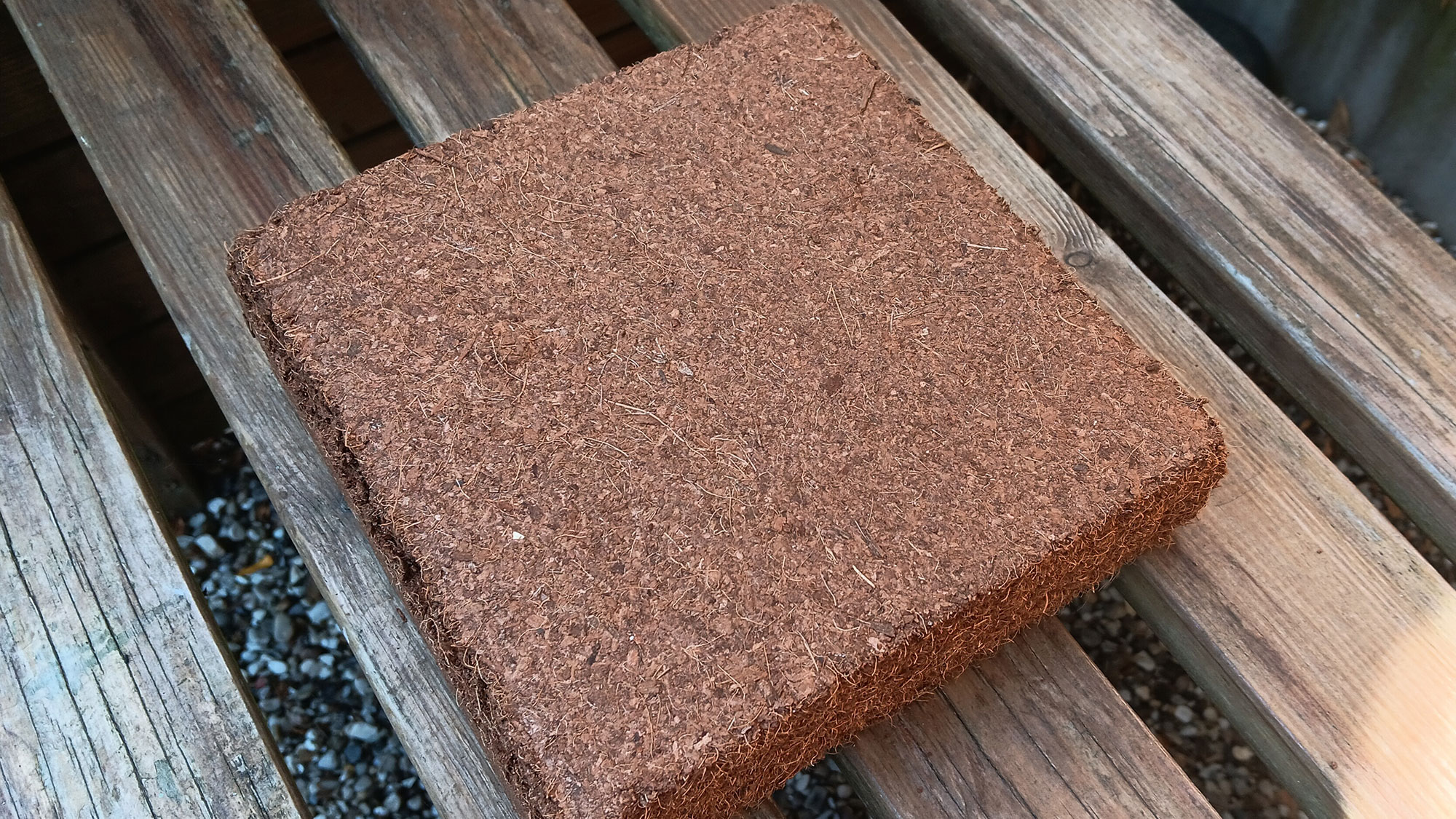
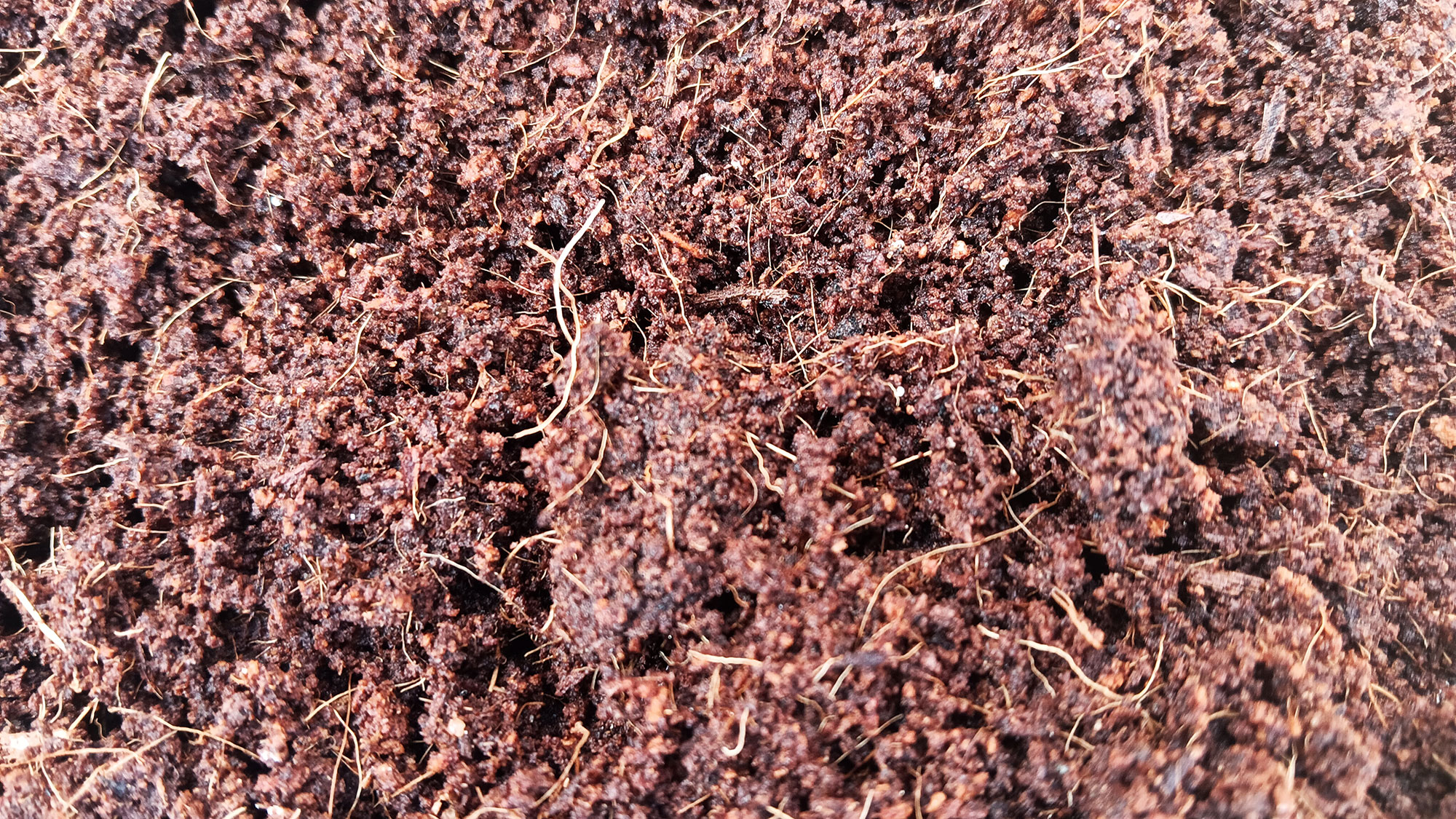
1. Lightly fill a 4” pot to the top with your chosen seed compost. Ensure there is ‘give’ in the compost rather than it being compact.
2. Gently press the top of the compost. Using the base of another pot will be fine. You should be left with a shallow rim.
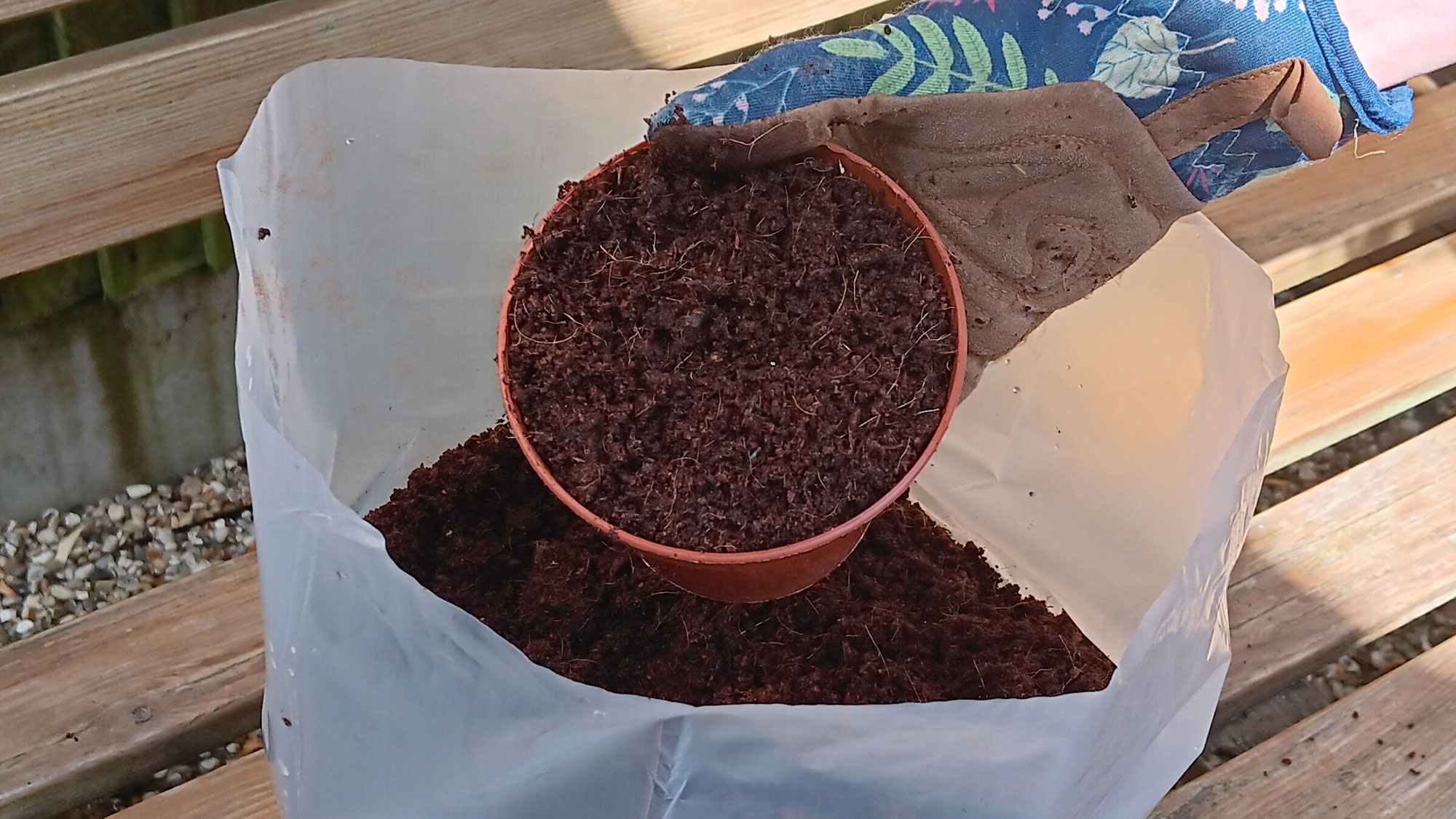
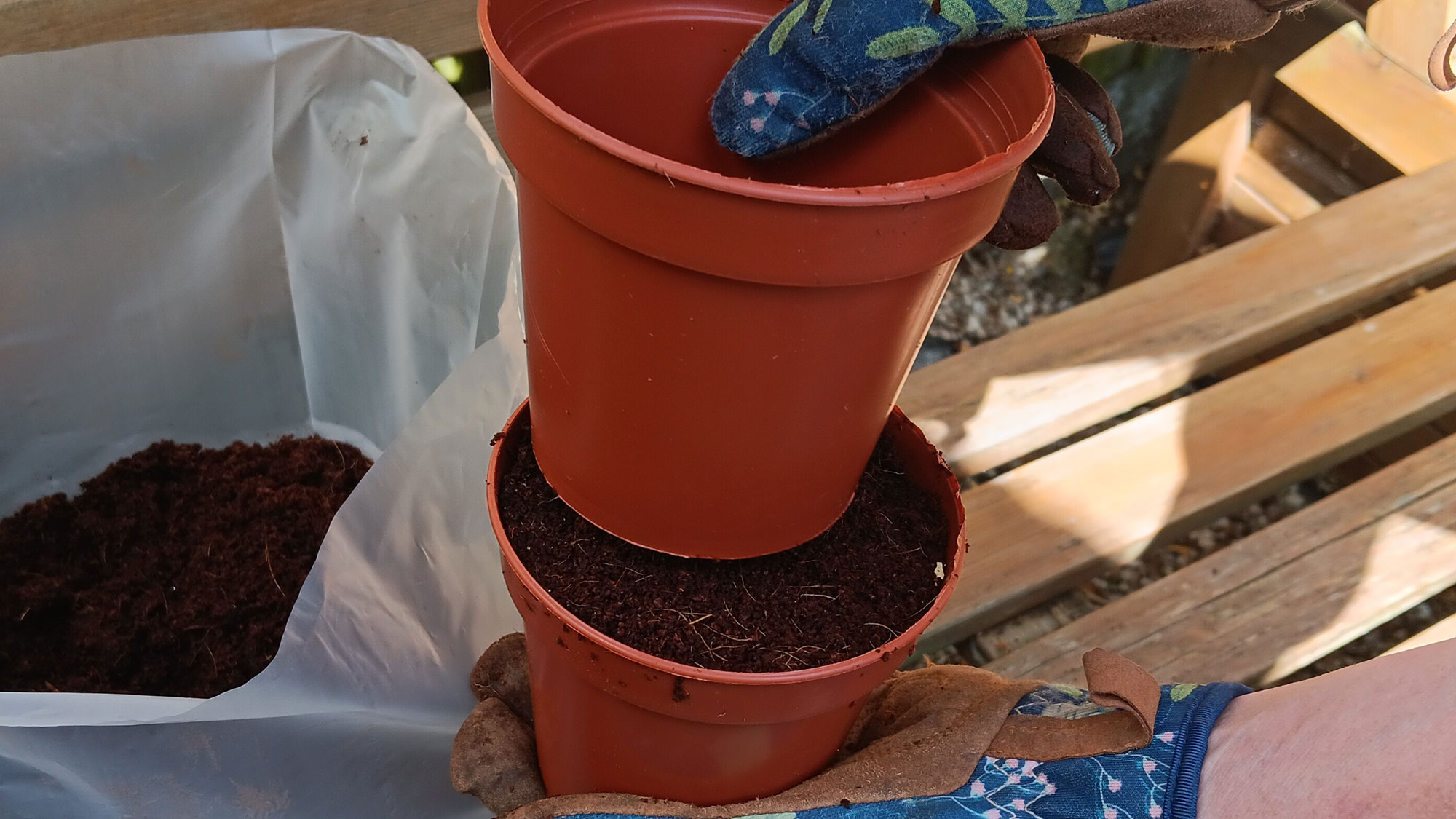
3. Place the pot in a dish of water and allow it to absorb the moisture for about 5 minutes. Avoid watering the compost from above, as this will compact the soil and impact the aeration. I was able to skip this stage as I'd only just rehydrated my coir compost and it was lovely and moist.
4. Lightly sow your chosen seeds on top of the compost per your seed packet instructions.
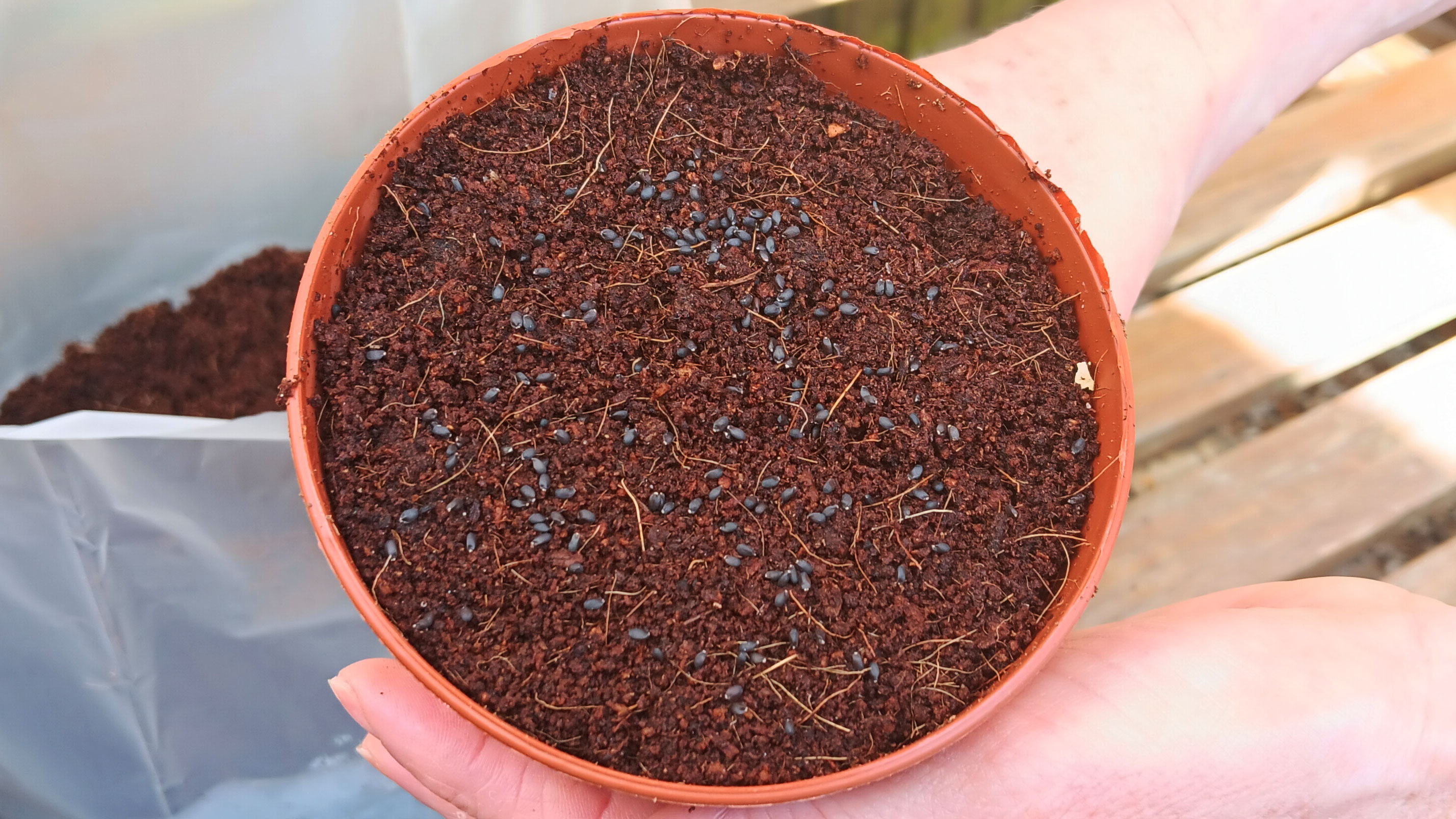
5. Place a thin layer of vermiculite on the top of the seeds.
6. Position your pot on a sunny windowsill and wait for the seeds to germinate.
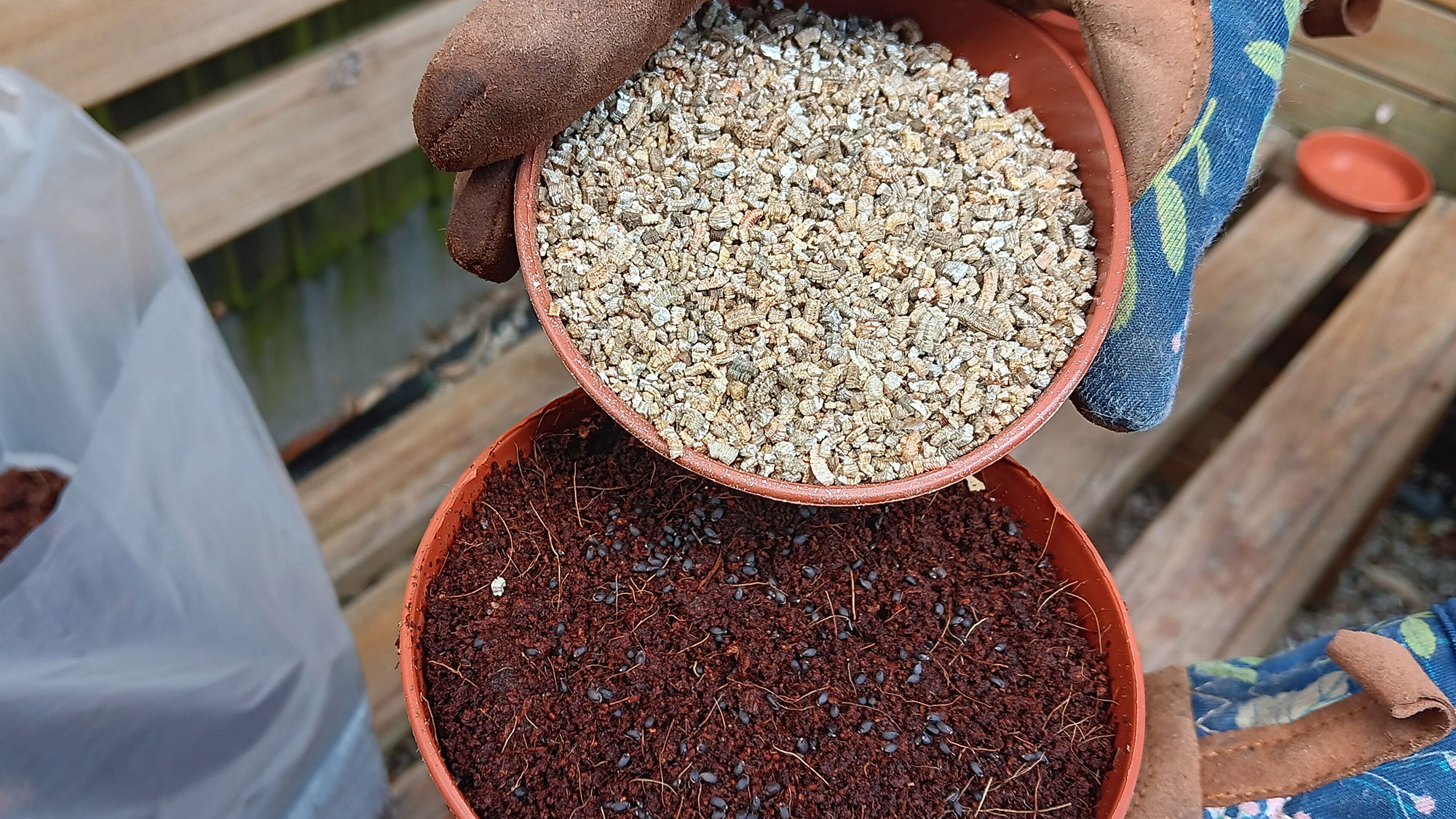

How to sow fine seeds
There are plenty of seeds, like runner bean and zucchini seeds that are large and easy to handle when sowing, but very fine seeds are much trickier. In this instance, Talman doesn't place vermiculite on top of the pot and sows the seeds without covering them.
He refers to lobelia and petunia seeds that are particularly fine and explains his top tip on how to sow them, “I dip a dibber in some water, touch the seed, and then place the seed on the compost. “He repeats this process until he’s sown all of the seeds he requires.
Rather than using a specific seed dibber, Talman relies on the nib end of a pencil.
Seed sowing FAQs
Will the seeds need watering?
“You won’t need to water the pots again until the seeds germinate,“ explains Talman, “If you keep watering, you’ll end up locking up the seed.”
Will I have to thin out the seedlings?
If your seeds have germinated and the seedlings are growing too close together, it’s best to thin them out so that the stronger seedlings can have more nutrients and room to grow.
When will the seedlings be ready to prick out?
“You’ll know they'll be ready to move when the roots are coming out of the bottom,” says Talman. It’s a much more reliable method than relying on the number of leaves sprouting, which doesn’t necessarily indicate that there is a strong root system.
To soak or not to soak?
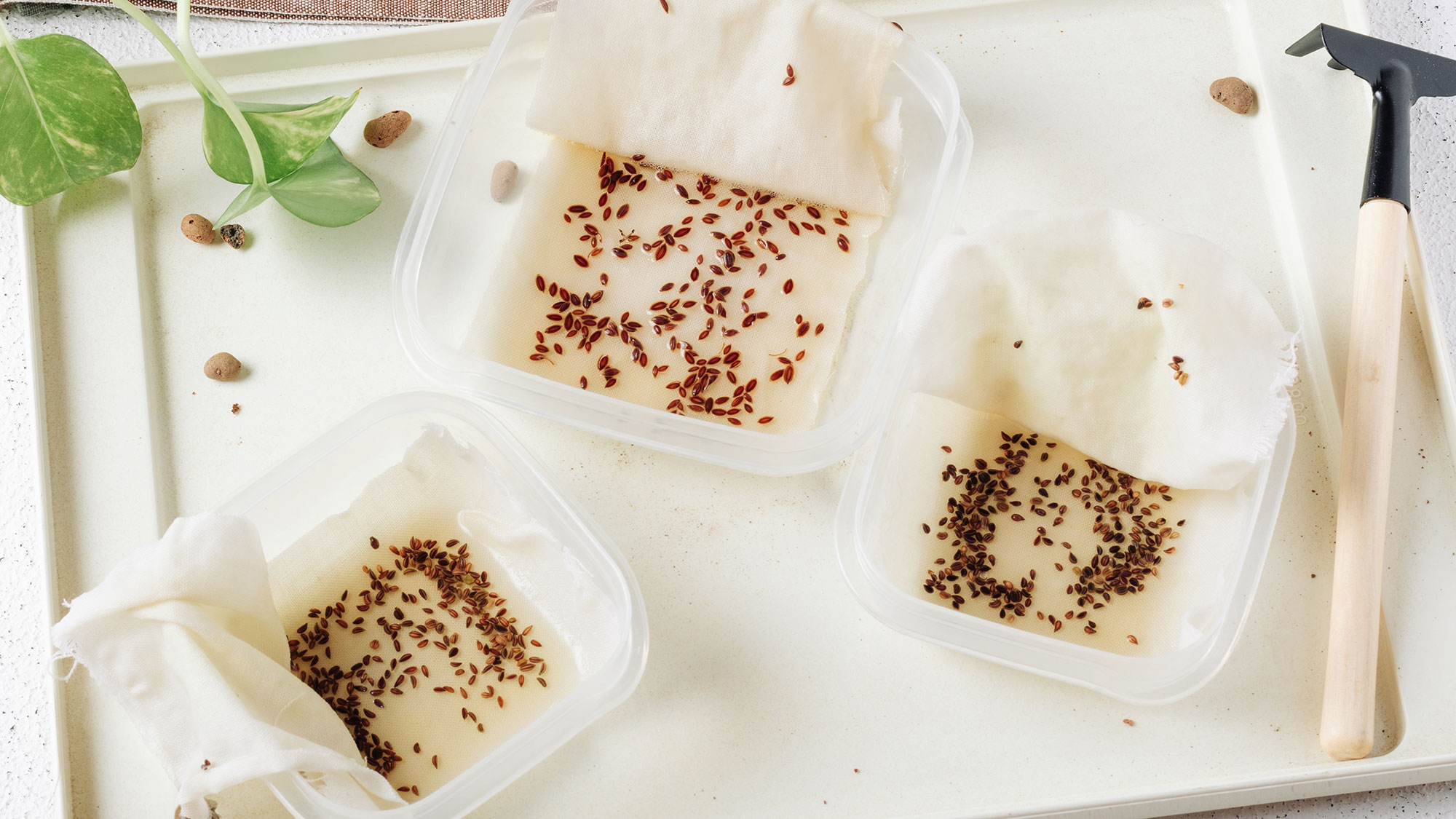
I’ve never soaked seeds before sowing, but I wanted to hear directly from Talman about whether and why I should be doing it.
“Soaking seeds helps germination, and they will germinate twice as quickly”, he says.
Soaking sweet peas can be particularly beneficial as the seeds are hard, and soaking softens them. Talman advises placing the seeds in a pot of water with a tiny amount of washing-up liquid, then leaving them to soak for 24 hours.
Why add the detergent? “A lot of seeds can have mildew, fungus and mold on their seed coats; if you sow them straight into the land, you never see it, but if you sow them in pots or cells, mold will more likely grow before the seed.”
The soaking process softens the seeds and also cleanses them to promote healthy growth. Talman adds that nasturium seeds are prone to disease and particularly benefit from being cleansed before sowing.
What to avoid when sowing seeds
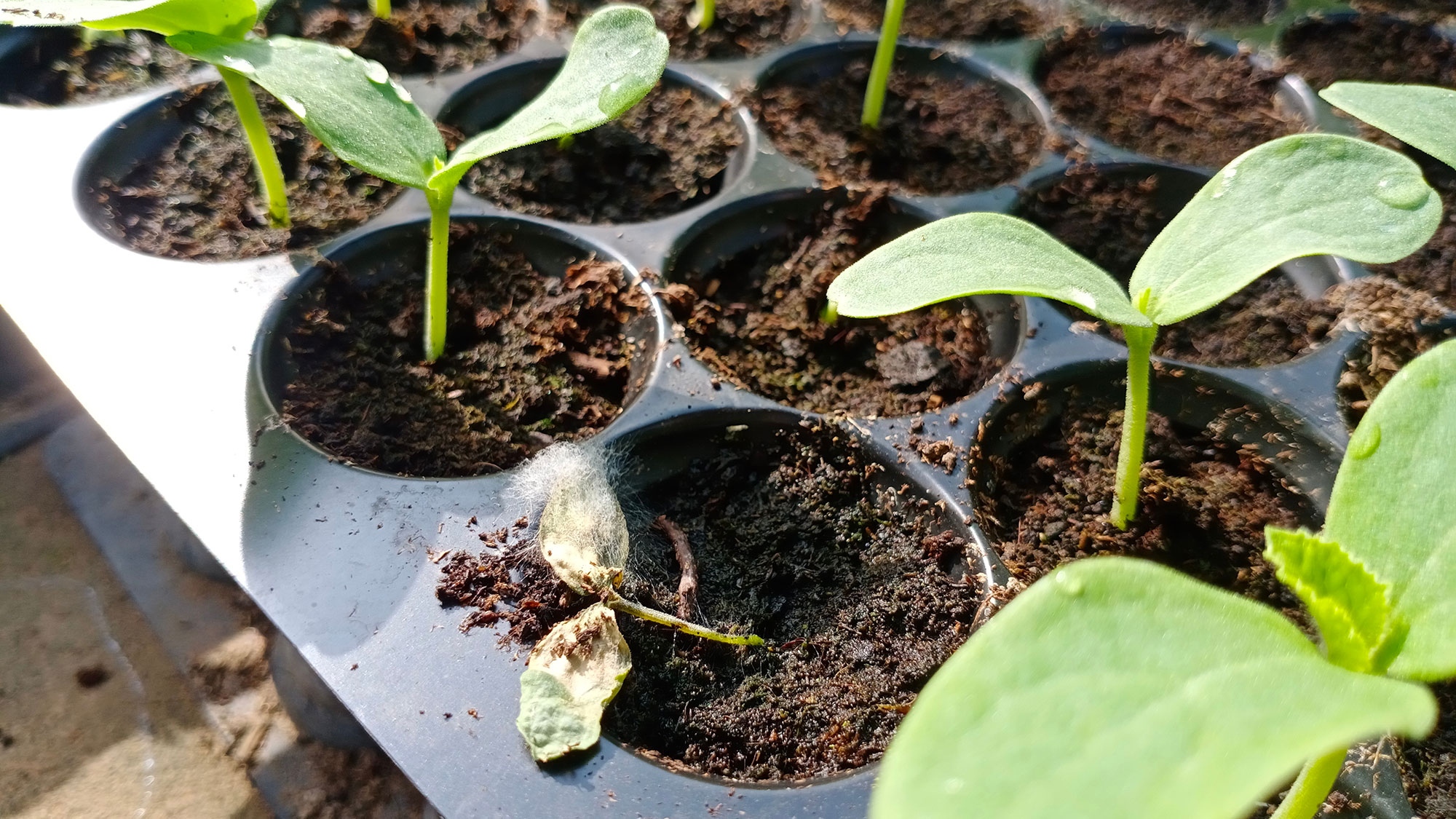
It’s easy to make mistakes when sowing seeds — sowing too many seeds can cause them to dampen off before you have time to prick them out. “It’s critical that the seeds have got room to come up and do their thing,” says Talman.
Damping off is a disease of seedlings caused by several different fungi or mold. It is common in young seedlings, especially those grown indoors or under glass. Infected seeds effectively ‘dampen off’, collapse and decay. It's likely to happen when seeds are in an environment with high humidity, where there is poor air circulation of it they are sown too thickly.
More from Tom's Guide
- Discover how to grow herbs indoors
- And how to grow tomatoes from seed
- Plus, 7 best vegetables to grow indoors

Camilla is the Homes Staff Writer and covers everything to do with homes and gardens. She has a wealth of editorial experience, mounting over 30 years, and covers news and features, tests products for reviews and compiles buying guides.
Her work has appeared in business and consumer titles, including Ideal Home, Real Homes, House Beautiful, Homebuilding & Renovation, and Kitchen & Bathroom Business. She’s even appeared on the cover of Your Home, writing about her own house renovation.
Although she’s obsessed with decorating her home, she also enjoys baking and trying out the latest kitchen appliances. But when she’s not inside, you’ll find her pottering about in her yard, tending to her vegetable patch or taking in her prized hydrangeas.
